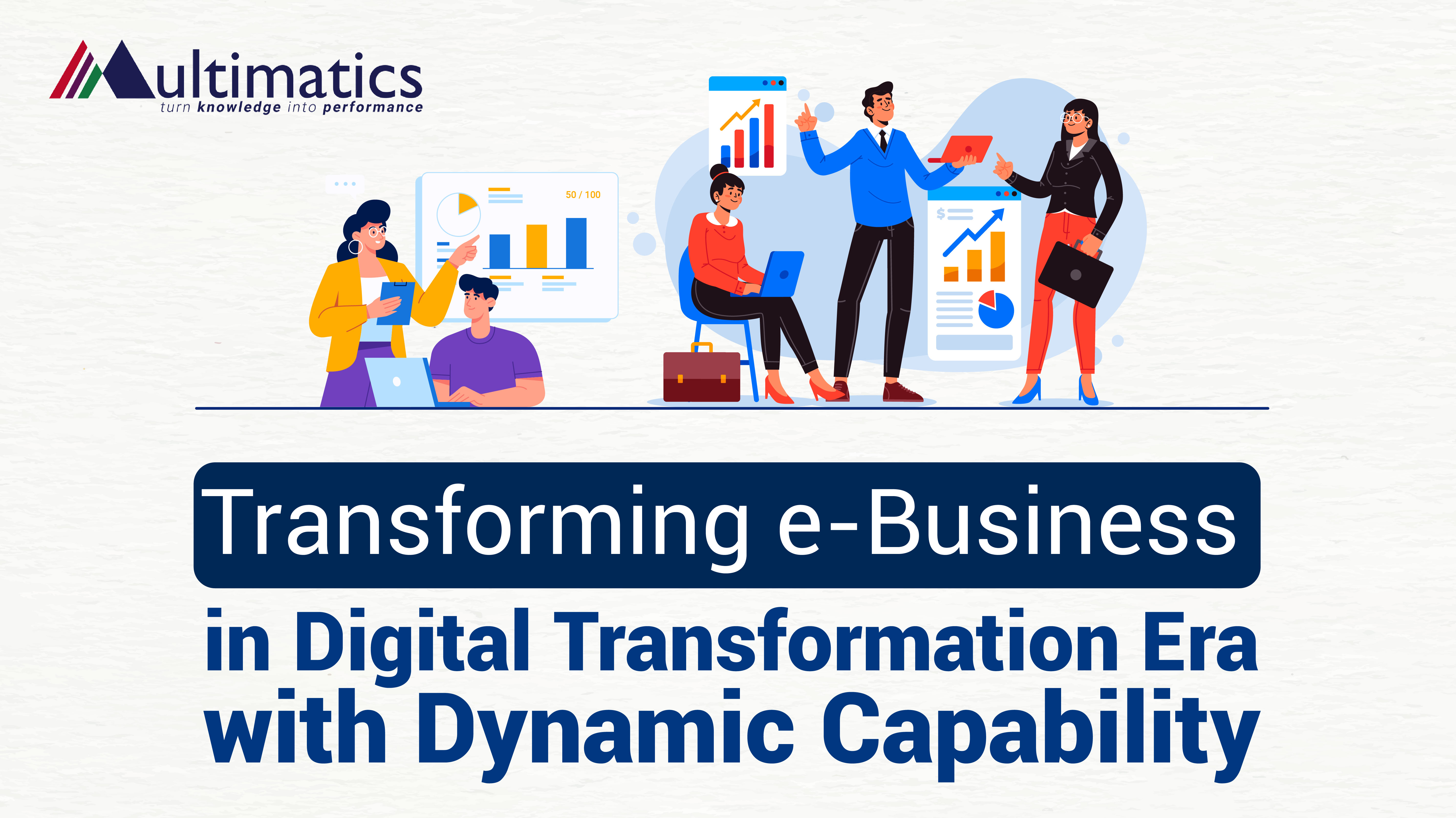

PhD candidate and result-oriented Director with 25 years experience with involvement in all levels of Business Strategy, Sales and Marketing, Managing Project and Product Development. Aside of managing a company, he is also the best corporate trainer and public speaker in seminar and conference.
Transforming e-Business in Digital Transformation Era with Dynamic Capability
The digital world has been fast-forwarded, and the future of e-business is governed by new roles, expectations, and priorities. In the post-pandemic era, e-business has entirely changed and is now a profitable option for many organizations.
E-Business in Digital Transformation Era
E-business is the utilization of digital technology particularly internet technologies to improve business competitiveness through ongoing optimization (Chaffey, 2015; Turban et al., 2012, Strauss and Frost, 2014). E-business in the digital transformation era is said to be crucial as the use of advanced technology will be increasingly needed, including in the business world.
The e-business industry is known for its quick development, and organizations in such sectors can no longer rely on the resources they have gathered to maintain their current competitive position. Instead, if they want to compete successfully, they must be able to combine resources in new ways, acquire more resources, and get rid of unnecessary resources—all while acting quickly and repeatedly.
The dynamic nature of the e-business requires them to be able to continually combine these resources in new ways and acquire new resources if they want to compete successfully.
This is where the role of Dynamic Capability is highly crucial for a successful e-business.
Dynamic Capability
Organizations must constantly reconfigure, acquire, and dispose their capabilities and resources to match the requirements of a changing environment if it is to keep up with the rapid changes in the business environment. Dynamic capabilities are the firm's ability to integrate, build, and reconfigure internal and external resources/competences to address and shape rapidly changing business environments (Teece et al., 1997).
For e-business transformation, dynamic capabilities are required. Finding methods for enhancing these qualities that are both efficient and typical across various businesses may be regarded as "best practice”. Daniel and Wilson (2003) identified eight dynamic capabilities that are required for the transformation of e-business and suggested methods for creating these capabilities that are both efficient and common among businesses.
The eight dynamic capabilities are:
- Rapid cycle of strategy development and implementation
- Skill to develop and critically evaluate business cases incorporating substantial alterations to the business model with uncertain information
- Ability to build commitment to a strategic change both within the organisation and with other stakeholders
- Iterative development of customer value propositions melding planned and experiential approaches
- Ability to reconfigure the sales/service process to exploit new channel capabilities
- Ability to integrate new and existing it systems without stifling innovation
- Tautly coupled e-business and corporate strategy formulation
- Ability to integrate new and existing channels to offer multi-channel service
Understanding the required capabilities for establishing E-business in a dynamic E-commerce environment can be benefited by applying these dynamic capabilities.
Conclusion
Dynamic capabilities are the skills that allow organizations to maintain their competitive advantage in the digital transformation era. They are unquestionably essential to the long-term success of an e-business. Note that organizations are unable to properly exploit E-business without a strong dynamic capability.
Chaffey, D. (2015). Digital Business and E-Commerce Management: Strategy, Implementation and Practice, Sixth Edition, Pearson Education Limited, United Kingdom. Daniel, E. M. & Wilson, H. M. (2003). The Role of Dynamic Capabilities in E-Busine ss Transformation. European Journal of I nformation Systems, Vol. 12, pp. 282-296, 2003
Daniel, E. M. & Wilson, H. M. (2003). The Role of Dynamic Capabilities in E-Busine ss Transformation. European Journal of I nformation Systems, Vol. 12, pp. 282-296, 2003
Ganatra, M. (2022). 2022 Digital Era of E-Commerce Transformation – HostNamaste. Retrieved from https://www.hostnamaste.com/blog/digital-era-of-e-commerce-transformation/
Strauss, J. & Frost, R. (2014). E-Marketing, Seventh Edition, Pearson Education, Inc., New Jersey
Teece, D.J., Pisano, G. and Shuen, A. (1997) Dynamic Capabilities and Strategic Management. Strategic Management Journal, 18, 509-533.
Turban, E. et al. (2012). Electronic Commerce 2012: A Managerial and Social Networks Perspective, Seventh Edition, Pearson Education, London